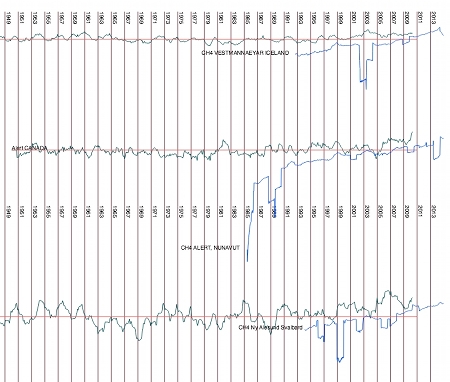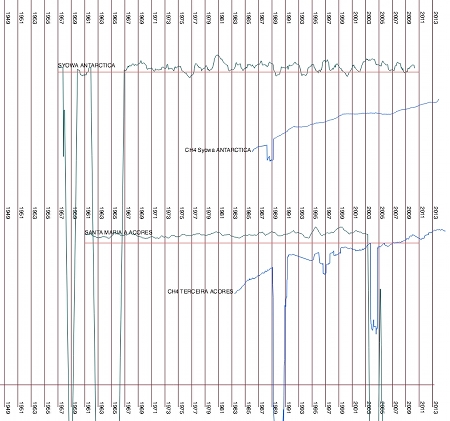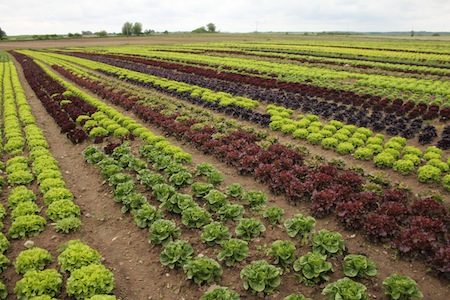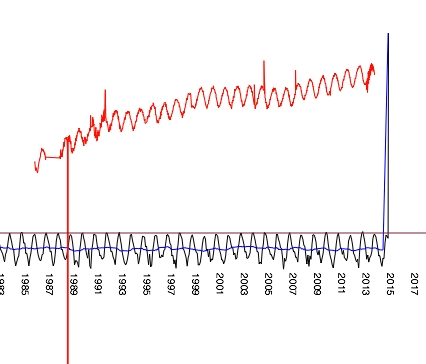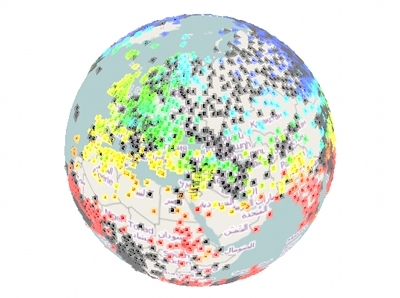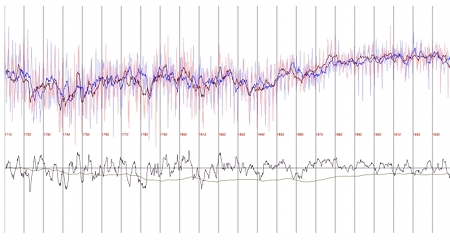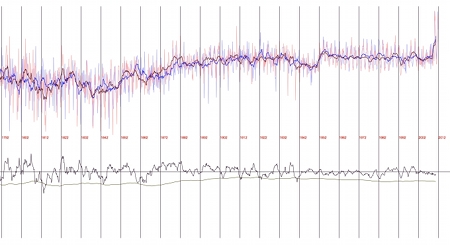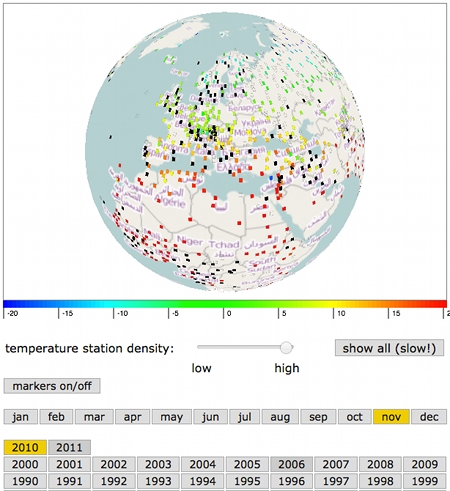
Image from NOAA (public domain if I understood correctly)
Those who follow the randform posts closely know that Tim and me had worked on a visualization of a main collection of global temperature stations. It was used in a post on Azimuth – a blog which is mostly concerned with environmental topics and which is run by the mathematical physicist John Baez. In the post I reviewed the temperature data, which was used by the IPCC for their sofar published climate Assessment Reports up to AR4 in 2007. I left the conclusions about the investigated temperature records and their quality to the reader, but in the comment section I became a bit more “direct” and wrote:
Well every reader may judge him/herself by looking at the visualizations. If you want my opinion: I think this is rather catastrophic. In particular I wouldn’t wonder if the “global warming hiatus” is connected to the gaps.
The “global warming hiatus” or “global warming pause” is a finding that the global temperature rise has approximately paused since 1998 and hence by making this comment I questioned this “warming pause” or at least its shape. Unfortunately my suspicion has now been more or less confirmed. That is there global warming continues.
The article “Possible artifacts of data biases in the recent global surface warming hiatus” by Karl et al. Science 2015 0 (2015)” in the journal “Science” has unfortunately to be rented for the prize of 20$/day for reading (so I haven’t looked at it), but NOAA has a summary, where it is written:
“Adding in the last two years of global surface temperature data and other improvements in the quality of the observed record provide evidence that contradict the notion of a hiatus in recent global warming trends,” said Thomas R. Karl, L.H.D., Director, NOAA’s National Centers for Environmental Information. “Our new analysis suggests that the apparent hiatus may have been largely the result of limitations in past datasets, and that the rate of warming over the first 15 years of this century has, in fact, been as fast or faster than that seen over the last half of the 20th century.”
About the newly included datasets it is written:
New analyses with these data demonstrate that incomplete spatial coverage also led to underestimates of the true global temperature change previously reported in the 2013 IPCC report. The integration of dozens of data sets has improved spatial coverage over many areas, including the Arctic, where temperatures have been rapidly increasing in recent decades. For example, the release of the International Surface Temperature Initiative databank, integrated with NOAA’s Global Historical Climatology Network-Daily dataset and forty additional historical data sources, has more than doubled the number of weather stations available for analysis.
I mentioned the International Surface Temperature Initiative (ISTI) in the Azimuth blogpost together with a citation from their blog:
The ISTI dataset is not quality controlled, so, after re-reading section 3.3 of Lawrimore et al 2011, I implemented an extremely simple quality control scheme, MADQC.
which doesn’t sound too great, if it comes to quality assessment.
But still: I suspect that the new temperature curves of that article match the real temperatures to a much better degree than the ones which were used for the IPCC reports until 2013.
It is though unfortunate that these new temperatures are not available, because I still have that suspicion that the role of methane in that warming trend is greatly underestimated and I still think it IS ULTIMATELY URGENT to investigate that suspicion. The exact shape of the curve would be rather important, because amongst others there was also a “hiatus” in the rise of methane and I think you can see that short pause in the above image.
Methane may however play eventually also a role in a way more dramatic environmental context. In my point of view that context should also be investigated URGENTLY, but it seems the view of methane is viewed controversely among climate scientists, at least Gavin Schmidt of the NASA’s Goddard Institute for Space Studies blurrily expressed anti-alarmistic words in an interview with John H. Richardson from Esquire (Esquire link via John Baez) by saying that:
“The methane thing is actually something I work on a lot, and most of the headlines are crap. There’s no actual evidence that anything dramatically different is going on in the Arctic, other than the fact that it’s melting pretty much everywhere.”
